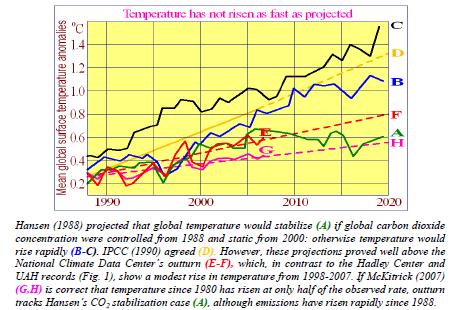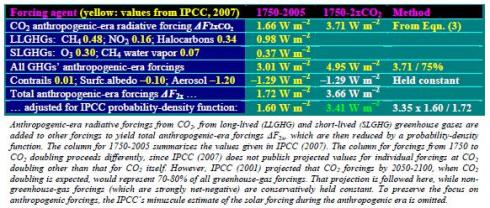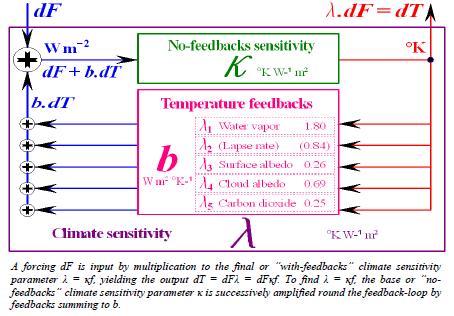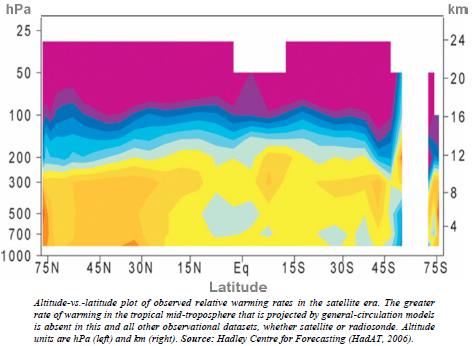50 Astronauts, Scientists Slam NASA on Man-made Climate Change
April 11, 2012 24 Comments
Man-Made Climate Change a Dogma, scientist say.
Here’s the letter:
March 28, 2012
The Honorable Charles Bolden, Jr.
NASA Administrator
NASA Headquarters
Washington, D.C. 20546-0001
We, the undersigned, respectfully request that NASA and the Goddard Institute for Space Studies (GISS) refrain from including unproven remarks in public releases and websites. We believe the claims by NASA and GISS, that man-made carbon dioxide is having a catastrophic impact on global climate change are not substantiated, especially when considering thousands of years of empirical data. With hundreds of well-known climate scientists and tens of thousands of other scientists publicly declaring their disbelief in the catastrophic forecasts, coming particularly from the GISS leadership, it is clear that the science is NOT settled.
The unbridled advocacy of CO2 being the major cause of climate change is unbecoming of NASA’s history of making an objective assessment of all available scientific data prior to making decisions or public statements.
As former NASA employees, we feel that NASA’s advocacy of an extreme position, prior to a thorough study of the possible overwhelming impact of natural climate drivers is inappropriate. We request that NASA refrain from including unproven and unsupported remarks in its future releases and websites on this subject. At risk is damage to the exemplary reputation of NASA, NASA’s current or former scientists and employees, and even the reputation of science itself.
For additional information regarding the science behind our concern, we recommend that you contact Harrison Schmitt or Walter Cunningham, or others they can recommend to you.
Thank you for considering this request.
Sincerely,
(Attached signatures)
CC: Mr. John Grunsfeld, Associate Administrator for Science
CC: Ass Mr. Chris Scolese, Director, Goddard Space Flight Center
Ref: Letter to NASA Administrator Charles Bolden, dated 3-26-12, regarding a request for NASA to refrain from making unsubstantiated claims that human produced CO2 is having a catastrophic impact on climate change.
1. /s/ Jack Barneburg, Jack – JSC, Space Shuttle Structures, Engineering Directorate, 34 years
2. /s/ Larry Bell – JSC, Mgr. Crew Systems Div., Engineering Directorate, 32 years
3. /s/ Dr. Donald Bogard – JSC, Principal Investigator, Science Directorate, 41 years
4. /s/ Jerry C. Bostick – JSC, Principal Investigator, Science Directorate, 23 years
5. /s/ Dr. Phillip K. Chapman – JSC, Scientist – astronaut, 5 years
6. /s/ Michael F. Collins, JSC, Chief, Flight Design and Dynamics Division, MOD, 41 years
7. /s/ Dr. Kenneth Cox – JSC, Chief Flight Dynamics Div., Engr. Directorate, 40 years
8. /s/ Walter Cunningham – JSC, Astronaut, Apollo 7, 8 years
9. /s/ Dr. Donald M. Curry – JSC, Mgr. Shuttle Leading Edge, Thermal Protection Sys., Engr. Dir., 44 years
10. /s/ Leroy Day – Hdq. Deputy Director, Space Shuttle Program, 19 years
11. /s/ Dr. Henry P. Decell, Jr. – JSC, Chief, Theory & Analysis Office, 5 years
12. /s/Charles F. Deiterich – JSC, Mgr., Flight Operations Integration, MOD, 30 years
13. /s/ Dr. Harold Doiron – JSC, Chairman, Shuttle Pogo Prevention Panel, 16 years
14. /s/ Charles Duke – JSC, Astronaut, Apollo 16, 10 years
15. /s/ Anita Gale
16. /s/ Grace Germany – JSC, Program Analyst, 35 years
17. /s/ Ed Gibson – JSC, Astronaut Skylab 4, 14 years
18. /s/ Richard Gordon – JSC, Astronaut, Gemini Xi, Apollo 12, 9 years
19. /s/ Gerald C. Griffin – JSC, Apollo Flight Director, and Director of Johnson Space Center, 22 years
20. /s/ Thomas M. Grubbs – JSC, Chief, Aircraft Maintenance and Engineering Branch, 31 years
21. /s/ Thomas J. Harmon
22. /s/ David W. Heath – JSC, Reentry Specialist, MOD, 30 years
23. /s/ Miguel A. Hernandez, Jr. – JSC, Flight crew training and operations, 3 years
24. /s/ James R. Roundtree – JSC Branch Chief, 26 years
25. /s/ Enoch Jones – JSC, Mgr. SE&I, Shuttle Program Office, 26 years
26. /s/ Dr. Joseph Kerwin – JSC, Astronaut, Skylab 2, Director of Space and Life Sciences, 22 years
27. /s/ Jack Knight – JSC, Chief, Advanced Operations and Development Division, MOD, 40 years
28. /s/ Dr. Christopher C. Kraft – JSC, Apollo Flight Director and Director of Johnson Space Center, 24 years
29. /s/ Paul C. Kramer – JSC, Ass.t for Planning Aeroscience and Flight Mechanics Div., Egr. Dir., 34 years
30. /s/ Alex (Skip) Larsen
31. /s/ Dr. Lubert Leger – JSC, Ass’t. Chief Materials Division, Engr. Directorate, 30 years
32. /s/ Dr. Humbolt C. Mandell – JSC, Mgr. Shuttle Program Control and Advance Programs, 40 years
33. /s/ Donald K. McCutchen – JSC, Project Engineer – Space Shuttle and ISS Program Offices, 33 years
34. /s/ Thomas L. (Tom) Moser – Hdq. Dep. Assoc. Admin. & Director, Space Station Program, 28 years
35. /s/ Dr. George Mueller – Hdq., Assoc. Adm., Office of Space Flight, 6 years
36. /s/ Tom Ohesorge
37. /s/ James Peacock – JSC, Apollo and Shuttle Program Office, 21 years
38. /s/ Richard McFarland – JSC, Mgr. Motion Simulators, 28 years
39. /s/ Joseph E. Rogers – JSC, Chief, Structures and Dynamics Branch, Engr. Directorate, 40 years
40. /s/ Bernard J. Rosenbaum – JSC, Chief Engineer, Propulsion and Power Division, Engr. Dir., 48 years
41. /s/ Dr. Harrison (Jack) Schmitt – JSC, Astronaut Apollo 17, 10 years
42. /s/ Gerard C. Shows – JSC, Asst. Manager, Quality Assurance, 30 years
43. /s/ Kenneth Suit – JSC, Ass’t Mgr., Systems Integration, Space Shuttle, 37 years
44. /s/ Robert F. Thompson – JSC, Program Manager, Space Shuttle, 44 years
45. /s/ Frank Van Renesselaer – Hdq., Mgr. Shuttle Solid Rocket Boosters, 15 years
46. /s/ Dr. James Visentine – JSC Materials Branch, Engineering Directorate, 30 years
47. /s/ Manfred (Dutch) von Ehrenfried – JSC, Flight Controller; Mercury, Gemini & Apollo, MOD, 10 years
48. /s/ George Weisskopf – JSC, Avionics Systems Division, Engineering Dir., 40 years
49. /s/ Al Worden – JSC, Astronaut, Apollo 15, 9 years
50. /s/ Thomas (Tom) Wysmuller – JSC, Meteorologist, 5 years








